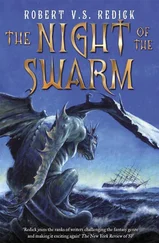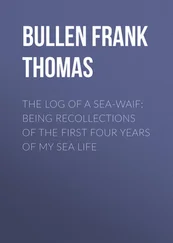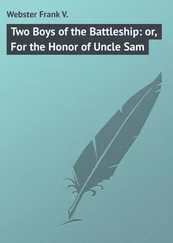In most cases, though, the ships that met with freak waves were never seen again. Each monster wave would push a deep trough in front of it, a chasm that the vessel would sink into, bow or stern first. If the waves were far enough apart, there'd be time for it to rise up and scale the crest. When the wavelength was shorter, events took a different turn. 'The ship would pitch forwards into the trough, only to be met head-on by the vertical front of the following wave. The vessel would be swallowed and buried under water. Even if it managed to rise up from the trough and start to ascend the crest, there was still a danger that the wave would be too high or too steep. Most of the time it was both. Extremely high and extremely steep. 'That meant attempting the impossible – scaling a vertical wall. Smaller vessels in particular would fall victim to waves whose height exceeded their length, but even ocean-going giants didn't always make it out of the trough and over the crest. 'The wave would flip them over and they would hit the water upside-down.
Freak waves, generated by the interplay of currents and wind, could reach speeds of fifty kilometres an hour, but seldom more. That was enough to wreak havoc, but compared to the twenty-metre-high tsunami that was sweeping the shelf, a freak wave was a lame duck.
Most of the tugs, tankers and ferries that had the misfortune to find themselves in the North Sea at that moment were thrown around like toys. Some collided, others were hurled against the concrete pillars of the platforms, or smashed against the loading buoys to which they'd been moored. Even reinforced concrete couldn't withstand the force of the impact. The giant structures began to collapse. The few left standing soon followed suit. Tankers, some fully laden with oil, collided and exploded, smothering the platforms with clouds of fire. Derricks were blown to pieces in a series of chain reactions. Burning debris was scattered over hundreds of metres. The tsunami tore the platforms from their foundations on the seabed and toppled them into the water. The devastation of the shelf took place just minutes after the wave had surged outwards from the site of the submarine slide on its way to the coastline around it.
Each incident alone was a nightmare come true for the offshore and shipping industries. But what happened that afternoon in the North Sea was more than just a living nightmare.
It was the apocalypse.
The coast
Eight minutes after the outer shelf collapsed, the tsunami hit the steep cliffs of the Faroes. Four minutes later it reached the Shetlands, and two minutes after that it slammed into the Scottish mainland and the southwest stretch of the Norwegian coast.
Nothing could flood Norway entirely – except perhaps the comet that scientists believed would wipe out all humanity if ever it were to crash into the sea. The Norwegian landscape was made up of mountain upon mountain, protected by sheer cliffs that even the biggest wave would find difficult to surmount.
But Norway lived on and from the water, and most of its major cities were at sea level, in the foothills of the towering mountains. All that separated them from the open water were small, flat archipelagos, some of which were home to cities themselves. Ports like Egersund, Hauge-sund and Sandnes in the south were at the mercy of the wave, just like Alesund and Kristiansund further north, and hundreds of smaller towns along the coast.
The worst hit was Stavanger.
All kinds of factors influenced what happened to a tsunami when it reached the coast – reefs, estuaries, underwater mountain ranges, sandbanks, offshore islands or even just the angle of a beach. As a result, the impact of the tsunami would either lessen or increase. Stavanger, the heart of the Norwegian oil industry, a key commercial and shipping centre, one of the oldest, prettiest and richest cities in Norway lay all but defenceless on the coast. Only a string of flat islands stretched north of the port, linked to the mainland by bridges. Minutes before the wave hit the city, the Norwegian government had alerted the Stavanger authorities, who had immediately broadcast a warning on radio, television and the web. But there was hopelessly little time to react. Evacuating the city was out of the question.
Unlike the Pacific states, where people had lived with tsunamis since time immemorial, Europe, the Mediterranean and the Atlantic didn't have a warning system. While in Hawaii, the PTWS, the Pacific Tsunami Warning System represented over twenty Pacific states, including almost every coastal country from Alaska to Japan, Australia, Chile and Peru, people in countries like Norway knew nothing about tsunamis. That was one reason why Stavanger's final minutes were filled with confusion and dismay.
The wave closed in on the city before anyone had time to flee. It was still growing when the pillars of the inter-island bridges collapsed. Just before it reached the city, it towered to its full thirty metres. It didn't break immediately, because it was so long, but crashed vertically into the harbour defences, shattering the quays and warehouses, then racing inland. The old town, with its historic timber houses from the late seventeenth and early eighteenth centuries, was razed to the ground. From Vagen, the city's historic dock, the water burst into the city centre. When the tide hit Stavanger's oldest building, the Anglo-Norman cathedral, the windows exploded outwards before the walls collapsed and the debris was swept away. Anything in the path of the water was blasted aside with the force of a missile. But it wasn't just water that destroyed the city. Mud, twenty-tonne boulders, ships and cars battered the buildings like outsize projectiles.
By now the sheer wall of water had turned into raging foam. The tsunami no longer surged through the streets at such speed, but it was turbulent and destructive. The foam trapped pockets of air, which compressed on impact, generating fifteen bars of pressure, enough to dent a tank. The water snapped trees like twigs, and their trunks became part of its weaponry. Less than a minute after the wave had hit the sea defences, the entire harbour was in ruins, along with the adjoining district. As the water surged along the streets, the first explosions could be heard.
The people of Stavanger had no hope of survival. Anyone who attempted to outrun the towering wall of water ran in vain. Most of the tsunami's victims were struck dead by the force of the wave. The water was like concrete. They didn't feel a thing. Those who survived the impact soon suffered a similar fate as the water flung them into buildings or ground them against debris. Almost no one drowned, apart from those trapped in flooded cellars, but even then most people were killed by the force of the surging mass of water or smothered in mud. Those who drowned died a terrible death, but at least it was quick. Few had time to realise what was happening. Starved of oxygen, their trapped bodies floated in dark, chilly water, heartbeat faltering, then finally stopping as their metabolism ground to a halt. The brain lived for a little longer. After ten to twenty minutes the last flicker of electrical activity faded.
It took just two minutes more for the wave to reach the suburbs. The greater the expanse of land it covered, the shallower the seething water became. Its speed continued to diminish. The wave raged and surged through the streets, killing anyone it encountered, but at least the houses stayed standing. It was too soon, though, for the survivors to celebrate. The coming of the tsunami was the beginning of the devastation.
Its retreat was almost worse.
KNUT OLSEN AND HIS FAMILY experienced the retreating wave in Trondheim, where the tsunami had arrived a few minutes earlier. Unlike Stavanger, Trondheim had the fjord to protect it. Flanked by several larger islands and shielded by a headland, it extended almost forty kilometres inland, then widened into a basin on whose eastern shore the city had been built. Many of Norway's towns and villages were situated at sea-level along the shores of the fjords. Anyone looking at the map would assume that even the destructive power of a thirty-metre wave wouldn't threaten Trondheim.
Читать дальше












